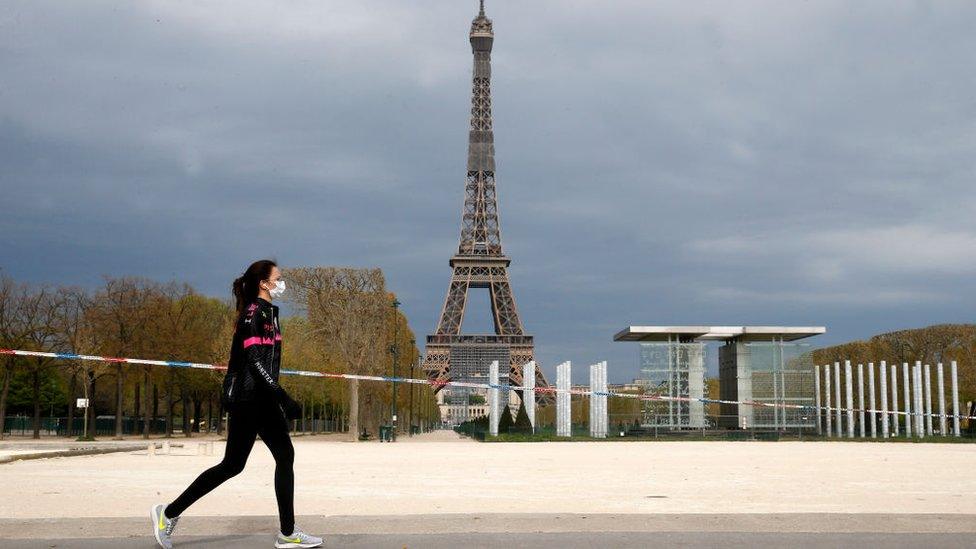Notre Dame fire: Fragile old lady of Paris waits for rescue
- Published

Building work on the cathedral has come to a standstill because of the coronavirus outbreak
When the wind blows around Notre Dame these days, strange, whistling chimes fill the air. A ghostly harmony made by the gaping holes in the old medieval structure, left by the fire exactly a year ago.
For most of the past year, this quiet music was drowned out by the noises of construction work, the tourists and traffic around Notre Dame. But today this Gothic giant stands silent and empty.
The cranes hang awkward and frozen above its scaffolding, the usual flow of tourists queuing for selfies outside the freshly-built hoarding has gone.
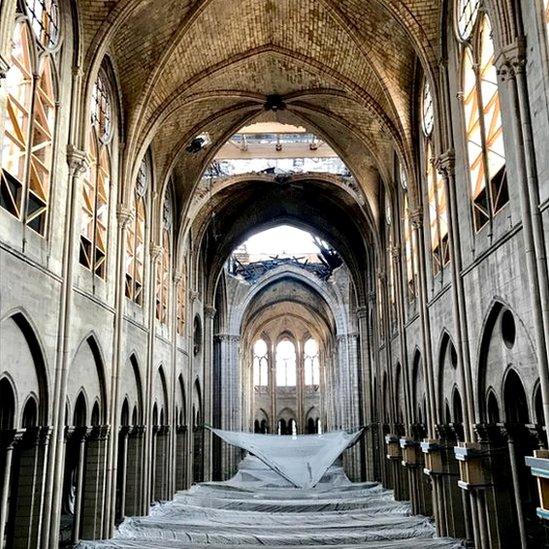
Daylight peers through the damaged roof of the cathedral

The restrictions in place to deal with coronavirus have meant that all restoration work here has stopped.
'Alone, but not abandoned'
"Notre Dame is an 850-year-old lady," the rector of Notre Dame, Patrick Chauvet, told me. "She's an injured, old lady."
"And for all the elderly, the injured, those in quarantine, or isolated in retirement homes, I think there's a symbolic link. There's no-one around Notre Dame here either; she's has been left alone, but not abandoned."
In the late afternoon of 15 April 2019, Monseigneur Chauvet was enjoying a drink at a nearby cafe when smoke began rising from the spire of Notre Dame.
There were gasps from the crowd at the moment Notre-Dame’s spire fell
He ran towards the building he knows so well.
The fire spread quickly, blazing through the mass of medieval rafters - known as "the forest" - and bringing down the iconic spire.
For a few critical hours, firefighters warned the French president that Notre Dame might not be saved.
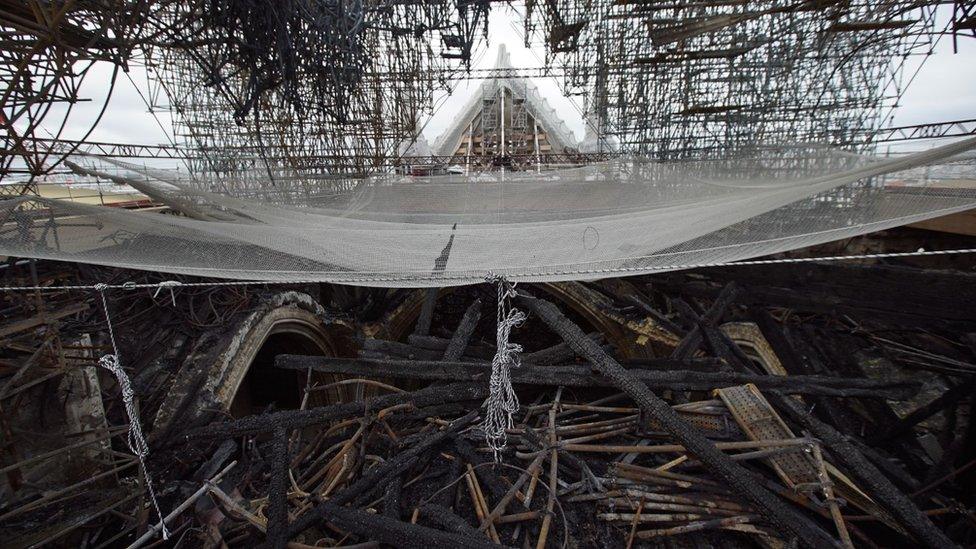
The old scaffolding damaged in the fire needs to be taken down very carefully
One year on, wooden buttresses have appeared on the outside walls, and a vast web of new scaffolding is going up around the building.
Ironically, it is a set of old scaffolding, put up before the fire to restore some of the cathedral statues, that poses the immediate threat.
It burned and twisted in the heat, and now needs to be dismantled and taken down.
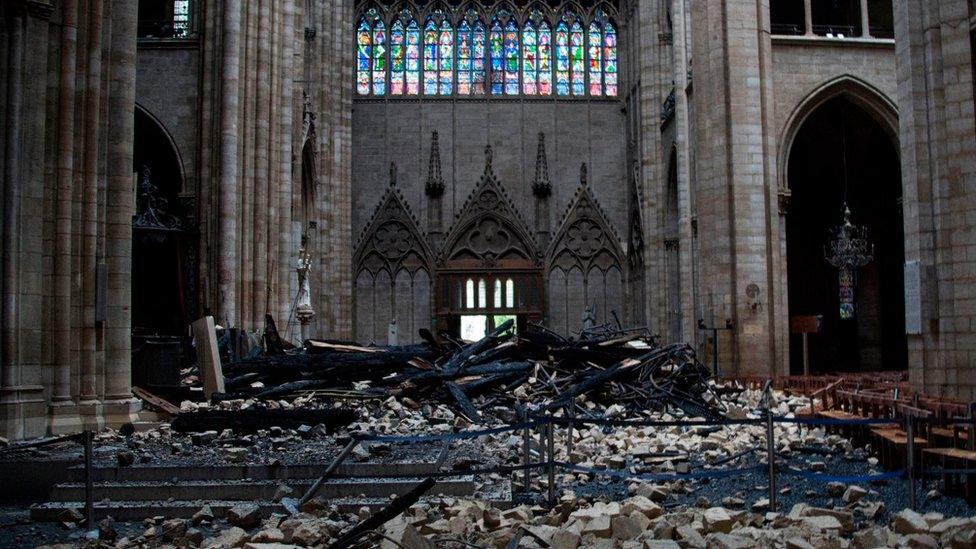
This was the view of the debris inside Notre Dame the day after the fire
Patrick Chauvet says the building is not yet totally secure.
"It's still fragile," he told me. "It just takes a storm, a tornado, and it will move. When the old scaffolding that is welded together is removed, then we can say the cathedral is 100% saved."
Claudine Loisel, a glass specialist working on the restoration, has been painstakingly testing the lead and grime on each panel of the building's 19th Century stained-glass windows, to check it's safe for restorers to begin their work.

All of Notre Dame's stained glass windows will have to be restored, such as the north rose window
She told a BBC4 TV documentary, Rebuilding Notre Dame, that some of the windows there had not been cleaned for a century, and that dirt may have helped save them from lead contamination in the fire.
"The first thick layer [of dust] acted as a small layer of protection," she explained. "So we just have to remove all these deposits to clean these windows."
Claudine was working on a window at a lower level of the cathedral, but specialists believe that the windows higher up are likely to be the worst affected.
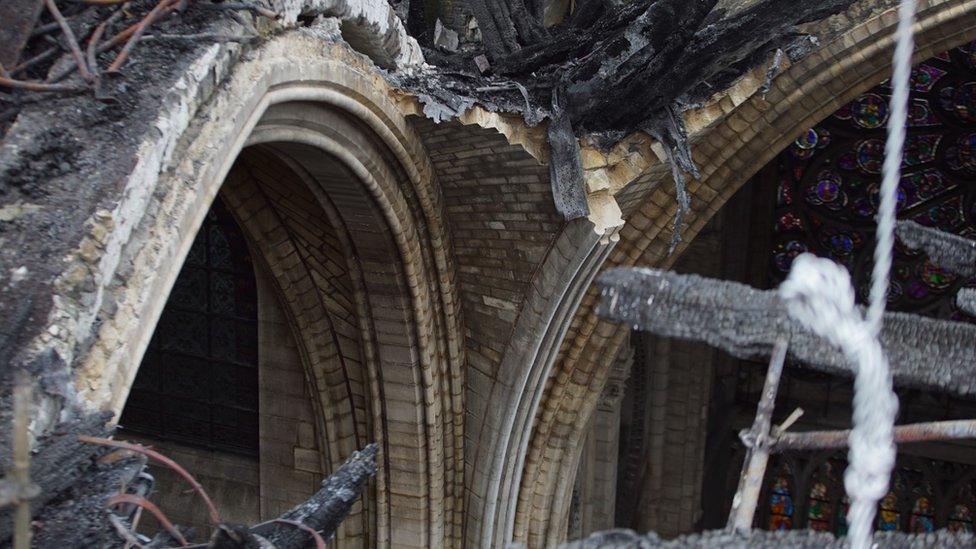
The cathedral's vaulting was badly damaged in the fire
Specialist artisans around the country have been working far away from Notre Dame on the art and furniture saved from the fire. It is a vast nationwide effort to minimise what is lost.
But it's not only coronavirus that has held up restoration.
Lead contamination also caused long delays immediately after the fire, and bad weather hampered efforts even more.
Researchers from the Centre for National Scientific Research (CNRS) in Paris are creating a digital model of every stone and rafter, to help with the restoration work.

More stories on the Notre Dame fire
Watch more than 50 of the cathedral's musicians paying tribute to Notre Dame a year on:
Allow YouTube content?
This article contains content provided by Google YouTube. We ask for your permission before anything is loaded, as they may be using cookies and other technologies. You may want to read Google’s cookie policy, external and privacy policy, external before accepting. To view this content choose ‘accept and continue’.


Each one has its own properties, sometimes its own medieval signature. It is technology from the 12th and 21st centuries coming together.
"It's amazing," researcher Livio de Luca told me, "because within this project, we're able to use the most advanced technologies… in a human adventure. The data we'll produce will be analysed by the next generation for years to come."

Philippe Villeneuve, the chief architect of the restoration project, surveys the work done so far
Ideas are already emerging for how the new spire and roof might look. International architects have been sending in designs featuring mirrors, solar panels, or a vast expanse of stained glass.
A changing face for an old identity. The building known across the world as Notre Dame; Our Lady.
For centuries, for many, the First Lady of France.

Notre-Dame before the fire in 360° video

Rebuilding Notre Dame: Inside the Great Cathedral Rescue will be shown in the UK on BBC4 TV on Wednesday at 2100 BST.
- Published15 April 2019
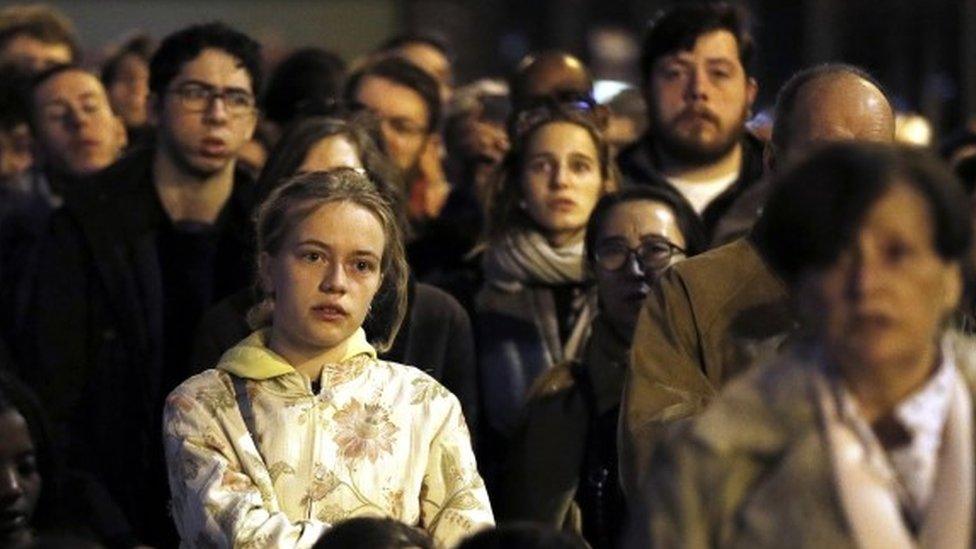
- Published15 April 2019
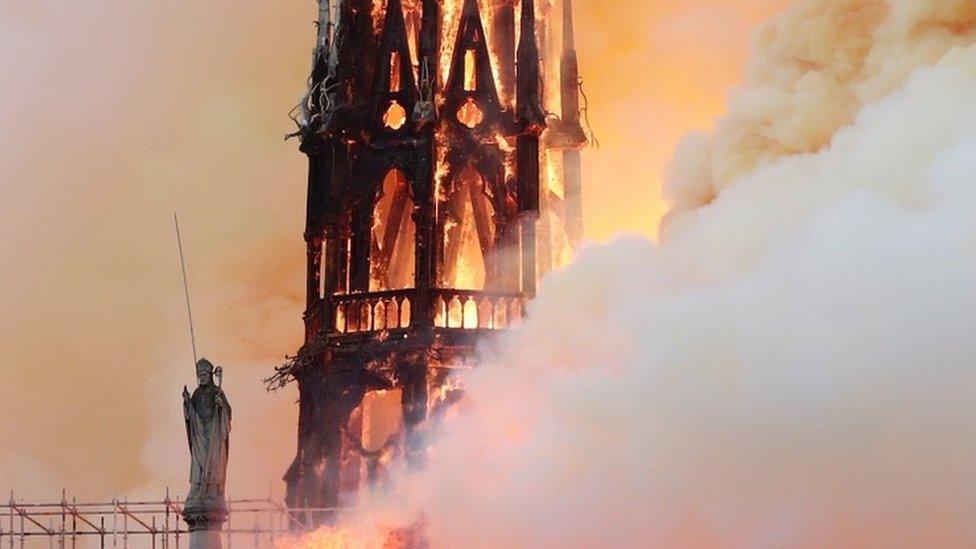
- Published7 April 2020
